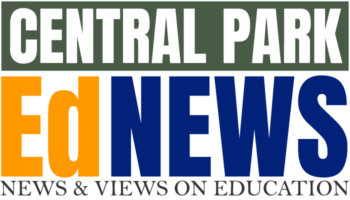To keep Central Park’s Denver Discovery Middle School afloat, Denver Public Schools spends $31,517 for each of its 93 students – $21,000 more than the district average.
Other area middle schools – McAuliffe International and Denver Green School-Northfield – spend $7,390 and $8,414 per pupil, respectively, according to Denver Public Schools’ Financial Transparency records. DPS places its average per pupil expenditure at $10,271 this year.
DDS is one of three schools that are considered unsustainable, with enrollments near 100. Closure is a distinct possibly, but Superintendent Alex Marrero stressed at a board meeting on Thursday (2/23) that he is not yet ready to recommend that. DPS officials prefer the term “consolidation and unification” to school closure.
DDS’ situation isn’t improving. Next year, it can expect only 62 students, with just 15 in sixth grade (25 is considered a typical classroom), according to Denver Public Schools projections. This year, 86% of its students qualify for free or reduced lunch – a common measurement of low income students — and 90% are minority, according to the DPS 2022-23 School Choice and Enrollment Snapshot.
While the extra amount of money is steep, it’s considered necessary to provide DDS students with the same quality of education available at larger schools. Schools receive the bulk of their money based on the number of their students. Fewer students means less money.
But student needs remain high, especially with high percentages of low-income students. Fewer dollars mean fewer teachers, support staff, electives, tutoring, technology and other services. Additional funding, or subsidy, is necessary to ensure those students are treated equitably; they need more money to receive what others get in the normal course of budgeting.
Schools with less than 215 students are considered financially untenable and are eligible for some amount of subsidy (the amount over what the school gets under the regular budget allocation formula).
Marrero plans to meet with DDS and two other school communities with extremely low enrollment soon and possibly have a plan for the board this spring. He intends to meet with a dozen other low-enrolled schools over the next six months about options, which might include closure or locating two schools in one building. Another option could be phasing out a school or changing boundaries. He said he’d deliver a final recommendation in September on their status for the 2024-25 school year.
The district is not in a strong position to continue subsidies. It faces a $9 million shortfall for next year that will require dipping into its reserve – an unwelcome option. The district’s declining enrollment further complicates the outlook.
Lower birth rates and the high cost of housing are blamed primarily for a steady drop in DPS enrollment since 2019, down from nearly 94,000 to 89,213 this year, according to the annual student count by the state Dept. of Education.
Last October, Marrero proposed closing 10 schools with low enrollments. The school board rejected the idea, citing poor outreach to school communities about such a drastic change.
Board members are beginning to face reality.
“I’m seeing a number of 62 kids at a middle school, and it’s not feasible. And I think we have to have some tough decisions,” Board Vice President Auon’tai Anderson said at Thursday’s board meeting.
DDS opened in 2014 and began losing students following the 2016-17 school year. Its original principal left, followed by a series of interim leaders; its education program, discipline and test scores suffered. By 2018-19, enrollment dropped from well over 400 to 264. A permanent principal was hired in 2021, but by then, enrollment had dropped to 113, then to 93 this year.
DDS is one of three schools that the district considers to be suffering from “critically low enrollment.” The other two: Math and Science Leadership Academy in the Valverde neighborhood off West Alameda Avenue, and Fairview Elementary, south of Mile High stadium. MSLA is projected to have 104 students next year; Fairview’s outlook is 118.
DDS is one of 15 schools the district is considering closing at some point or keeping open with cost-saving measures. The other 12 schools have “concerning enrollment” and could stay open with continued subsidies or other measures.
According to a district report, subsidies next year for the three lowest enrolled schools:
DDS: $1,056.611
MSLA: $693,282
Fairview: $680,139
The same report noted the projected enrollment and subsidy next year for the other dozen schools:
- International Academy of Denver at Harrington, 131 students, $519,708 subsidy.
- Columbian Elementary, 141 students, $537,838 subsidy.
- Schmitt Elementary, 142 students, $531,651 subsidy.
- Hallett Academy, 171 students, $1,049,172 subsidy.
- Palmer Elementary, 175 students, $352,626 subsidy.
- Kaiser Elementary, 175 students, $360,053 subsidy.
- Whittier K-8 School, 186 students, $300,932 subsidy.
- Colfax Elementary, 192 students, $247,447 subsidy.
- Eagleton Elementary, 194 students, $211,134 subsidy.
- Ashley Elementary, 198 students, $105,179 subsidy.
- Beach Court Elementary, 201 students, need $86,618 subsidy.
- Cole Arts and Sciences Academy, 209 students, $37,122 subsidy.




